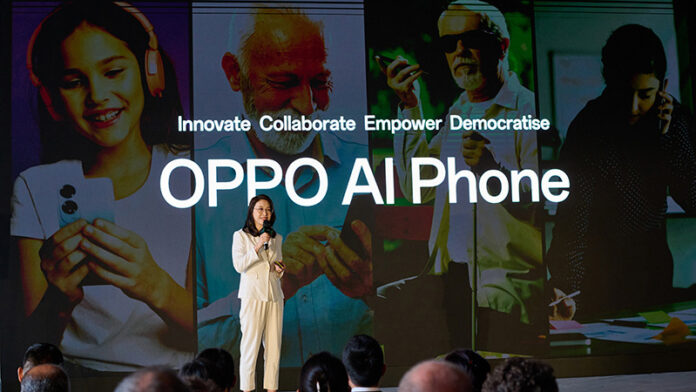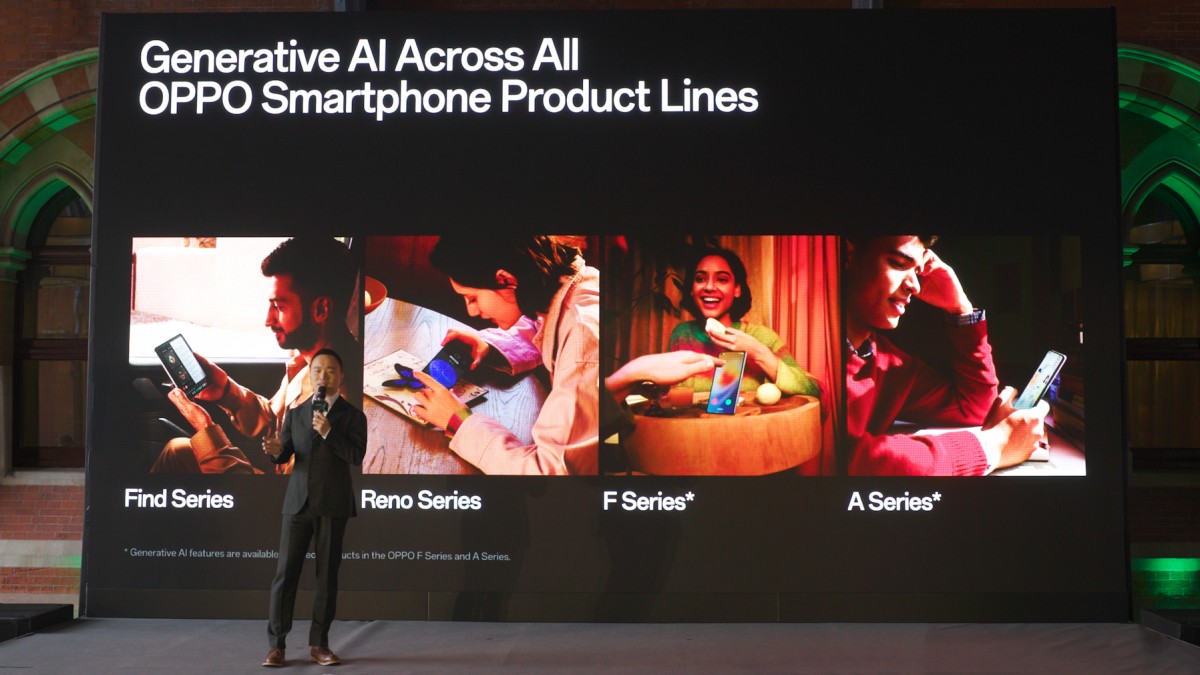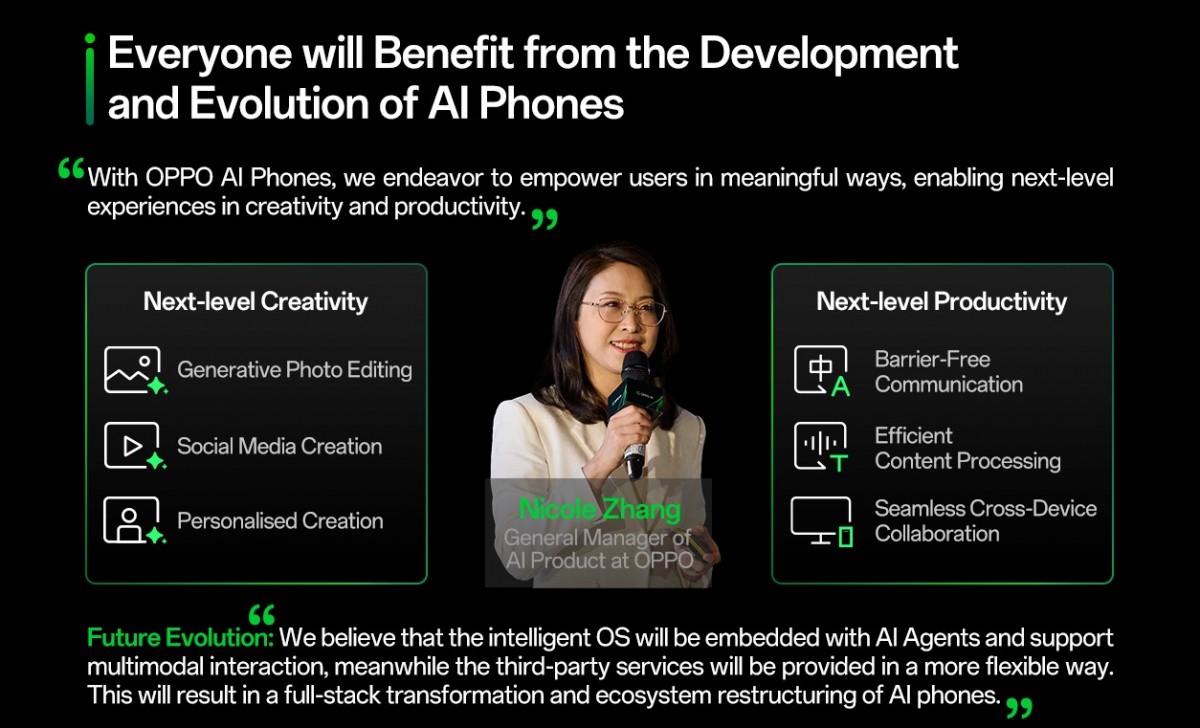Smartphones are expected to become the most important personal AI devices in the future, according to Oppo, and it has taken on a mission to bring AI to the masses through them. By the end of the year, Oppo wants to have 50 million users worldwide using AI.
To deliver a range of experiences, the company has partnered with the likes of Google, Microsoft, MediaTek, and others. In the field of AI imaging alone, Oppo has filed over 5,000 patents.
Oppo AI:
In January, Oppo became the first company to deploy an LLM with 7 billion parameters on a smartphone (the AndesGPT model on the Find X7 series). Natural language comprehension and summarizing phone calls were among its tasks. As of this year, the company has already rolled out 100+ generative AI features.
In fact, that 50 million user target specifically targets users of generative AI. Photo editing includes removing an object from a photo and filling in the hole. Approximately 15 times a day, users tap this feature, according to Oppo. Social media visuals can also be created using generative AI.
Using LLMs, or Large Language Models, will allow us to transcribing spoken words quickly and translating in real-time. Additionally, Oppo envisions cross-device AI capabilities that work equally well across desktops and phones.
On-device and cloud AI will be used in a hybrid AI architecture. In this case, Google’s Gemini model will be used in the Reno12 series and the next Find X flagship (which will be available globally soon). They will also have an AI Toolbox with AI Writer and AI Recording Summary.
With the partnership, Microsoft will improve the connection between desktop and phone AI and bring fast, accurate responses via natural voice and text.
As part of the Oppo-MediaTek partnership, the two companies are working together to improve the storage and computational efficiency of future Oppo phones by tuning chips.








